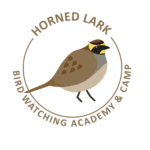
People are either mountain lovers or beach lovers. They find it hard to make a choice between the magnificent, peaceful mountains and the serene, endless beaches. Many think that nothing can beat the panoramic views of the hills and the crashing waves of the beach. But all they need is a trip to the Rocky Mountain National Park – ‘a walk through nature’ – to change their mind. And bird watching in the Rocky Mountain National Park is magnificent!
Whether you are a nature lover, an adventurer, or a city-dweller, the National Parks promise you the most exciting and adventurous journey of your lives. Moreover, visiting the Rocky Mountain National Park is more convenient, economical and versatile, when compared to a variety of other outings.
If you are someone who is ready to explore soaring mountain peaks, abundant wildlife, and wishes to be mesmerized by the beauty of nature then the Rocky Mountain National Park, Colorado, is an ideal vacation spot for you.

Overview of the Park
Located in the state of Colorado, Rocky Mountain National Park is flanked by the towns of Grand Lake, Larimer and Boulder. Colorado is the perfect adventure spot as it gives you a chance to ski the world famous Rocky Mountains, explore the many cities and towns, and enjoy the breathtaking beauty.
Rocky Mountain National Park is indeed a top destination in Colorado where one can rejoice in the crisp air and panoramic vistas. A preferred spot for mountaineers, hikers, skiers and ordinary day-trippers, Rocky Mountain National Park is surely one of the most popular parks in the National Park service system.
You can drive up the Trail Ridge Road – the highest paved road in any National Park of the country. Besides this, viewing wildlife is another interesting thing to do. Mountain lions, elk, deer, bighorn sheep and bears are some of the animals visitors may come across. The park is also a famous spot for bird watching- the number of species found in the state is a whopping 504!
GET KIDS BIRD WATCHING
- 12 Month Prepaid Bird Watching Subscription – 1 patch a month$84.00
- 12 Month Prepaid Bird Watching Subscription – 3 patches a month$120.00
- Kids Bird Watching Entry Level Monthly Subscription$7.00 / month
- Kid & Adult Bird Watching Starter Pack Subscription$10.00 / month and a $72.00 sign-up fee
Camping and more
Camping is another fun family activity that makes the Rocky Mountain National Park a memorable experience. You can also stay in cabins which are available on the outskirts of the park.
And finally, anywhere you turn you will witness a marvel of nature, so keep your eyes open and never miss a splendid view!

Bird Watching in the Park
Bird watching is an extremely popular activity. It is as simple as observing birds in their natural habitat. Birdwatchers from all over the country and around the globe come to the Rocky Mountain National Park to find the ring-billed gull, belted kingfisher, canyon wren, and many more birds.
Around 422 birds have been spotted in Larimer County, 252 in Grand Canyon and 411 in Boulder. Such statistics make this National Park an ideal bird-watching site. Some of these birds live in the park year-round and others are just passing through. Also, bird-watching not only increases awareness in wildlife conservation but also helps people learn about the habitat of wildlife.
Rocky Mountain National Park Map
It is essential to carry a map while going to any National Park. The map can be downloaded from various apps or the official website of the park. It can also be downloaded from the website nps.gov or acquired from the visitors’ center of the park.
Additionally, every area does not promise a decent network which makes it necessary to have the map pre-downloaded or in hard copy. Park maps contain information about the visitors’ center, picnic area, campground etc.

Rocky Mountain National Park Weather
The month of December marks the onset of the winter season. Deep snowpacks, high winds, and sudden blizzards can be expected. Some roads can also be found closed due to snowfall. The month of April brings the spring season which is characterized by unpredictable weather. Some days are cold with heavy rain and snow, while some are sunny. Many trails are found covered with snow. Summer begins in June, marked by wildflowers, thunderstorms, and warmer weather. The season of fall can be observed from September onwards, marked by crisp air, blue skies, and dry weather.
Rocky Mountain National Park Hotels and Camps
Unfortunately, there is no overnight accommodation available inside the park. However, there are many hotels and lodges around the area. The Estes Park Resort, Estes Lake Lodge, Rams Horn Village Resort, Silver Moon Inn, and Western Riviera Lakeside Lodging are some of the options one can consider.
These places are not only the best accommodations around Rocky Mountain National Park but also provide great facilities like an indoor pool, spa, and on-site restaurant. Longs Peak campground, Timber Creek campground, Glacier Basin campground, Moraine Park campground, and Aspenglen campground are some options to choose from.
10 Birds to see in the Rocky Mountain National Park
Northern
Shoveler
The aptly named Northern Shoveler has a shovel shaped bill that sets it apart from other dabbling ducks. Male shovelers are bold white, green, blue and rust but their most notable feature is the white chest. Female and immature shovelers are a mottled brown color and have powdery blue wings. Their most notable field mark is the orange-colored bill. Shovelers are mostly found in shallow wetlands, rice fields, lakes and sewage lagoons.
Ring-Billed Gull
Ring-Billed Gull is a medium-sized gull with a fairly short and slim bill. It has roughly a pigeon sized body but with larger wings. Adults are clean gray with a white head, body and tail, while non-breeding adults have brown streaked heads. These birds mostly feed on insects, earthworms, fish, rodents and grain. They breed near lakes, rivers and coastlines of Canada and Northern United States.
Northern Harrier Hawk

The Northern Harrier Hawk is a slender, medium-sized raptor with fairly broad wings and a long, rounded tail. They often fly with their wings held in a dihedral or V-shaped above the horizontal. Male Harriers are gray above and wheatish below with black wingtips while females and immature birds are brown with black bands on the tail. All Harriers have a white rump patch which is obvious in flight. They breed in wide open habitats and their nests are concealed on grounds in grasses or wetland vegetation.
Belted Kingfisher
Belted Kingfisher are stocky, large headed birds with a shaggy crest on the top and back of the head. They have short legs and medium length tails. Belted Kingfishers are blue-gray with white spotting on wings and tail. They have a broad rusty band on their bellies and spend most of their time perched along edges of streams, lakes and estuaries searching for fish. These kingfishers spend winters in areas where water does not freeze so that they have access to aquatic foods.
American Three-Toed Woodpecker

Formerly called Three-Toed, the American Three-Toed Woodpecker is a medium-sized white and black woodpecker often found at high elevations. Its face is black with white stripes above and below the eye, and white speckles on the forehead. Mostly encountered in spruce forests, it moves to lower elevations during the winter season.
American
Kestrel
An American Kestrel is roughly the size and shape of a mourning dove although it has a larger head, longer and narrow wings and a square tipped tail. Males have slate blue wings while females have reddish brown wings. Both male and female have a pair of black vertical slashes on the sides of their face often called sideburn. They occupy habitats ranging from deserts and grasslands to alpine meadows.
Steller’s
Jay
Steller’s Jay is a beautiful large headed bird with a chunky body, rounded wings and a long full tail. Its bill is long, straight and powerful. They have a prominent triangular crest that stands nearly straight up from their heads. Their head is charcoal black and body is blue, almost sparkling at the wings. Steller’s Jays spend most of their time exploring forest canopies and are known to be bold, inquisitive and noisy.
Horned Lark

Horned Larks are small, long bodies birds which usually adopt a horizontal posture. Thin bills and rounded heads are some other characteristics of a Horned Lark. Males are sandy to rusty-brown with a black chest band. The face and throat are yellow or white. Females have similar characteristics but are less crisply defined. They are often found in barred lands with less or no vegetation and feeds on weed, grass seeds and insects. These birds often sing in flight and the song appears to function as courtship in such cases.
Pygmy Nuthatch
The Pygmy Nuthatch is a tiny bird with a relatively large and rounded head and a straight, sharp bill. Its wings are short and broad and the tail is square. They breed cooperatively and move constantly. Typically found in lower and middle elevations, the Pygmy Nuthatch is bluish gray in color. It feeds mostly on weevils, leaves and bark beetles.
Canyon Wren
A Canyon Wren is a small songbird with a brown body and white throat. It has a bright tail and a long, thin, decurved bill. They nest and feed in narrow rock crevices and often mark their presence with a beautiful and distinctive song, basically a loud cascade of musical whistles. An interesting fact about this bird is that it is not known to drink water as it gets all its water from its insect prey.
Wrapping It Up …
While visiting the Rocky Mountain National Park, do not forget to keep certain things in mind, such as checking the health status of yourself and your group before starting your journey, preparing for both excessive heat and brutal cold, knowing pet rules, having a first aid kit and treating the land with due respect.
Always act like a responsible citizen and don’t litter or feed the animals. Never forget to carry a camera for some awesome bird watching in the Rocky Mountain National Park. But don’t forget … to take a deep breath, soak in the beauty of nature, and embrace the solitude!










